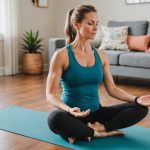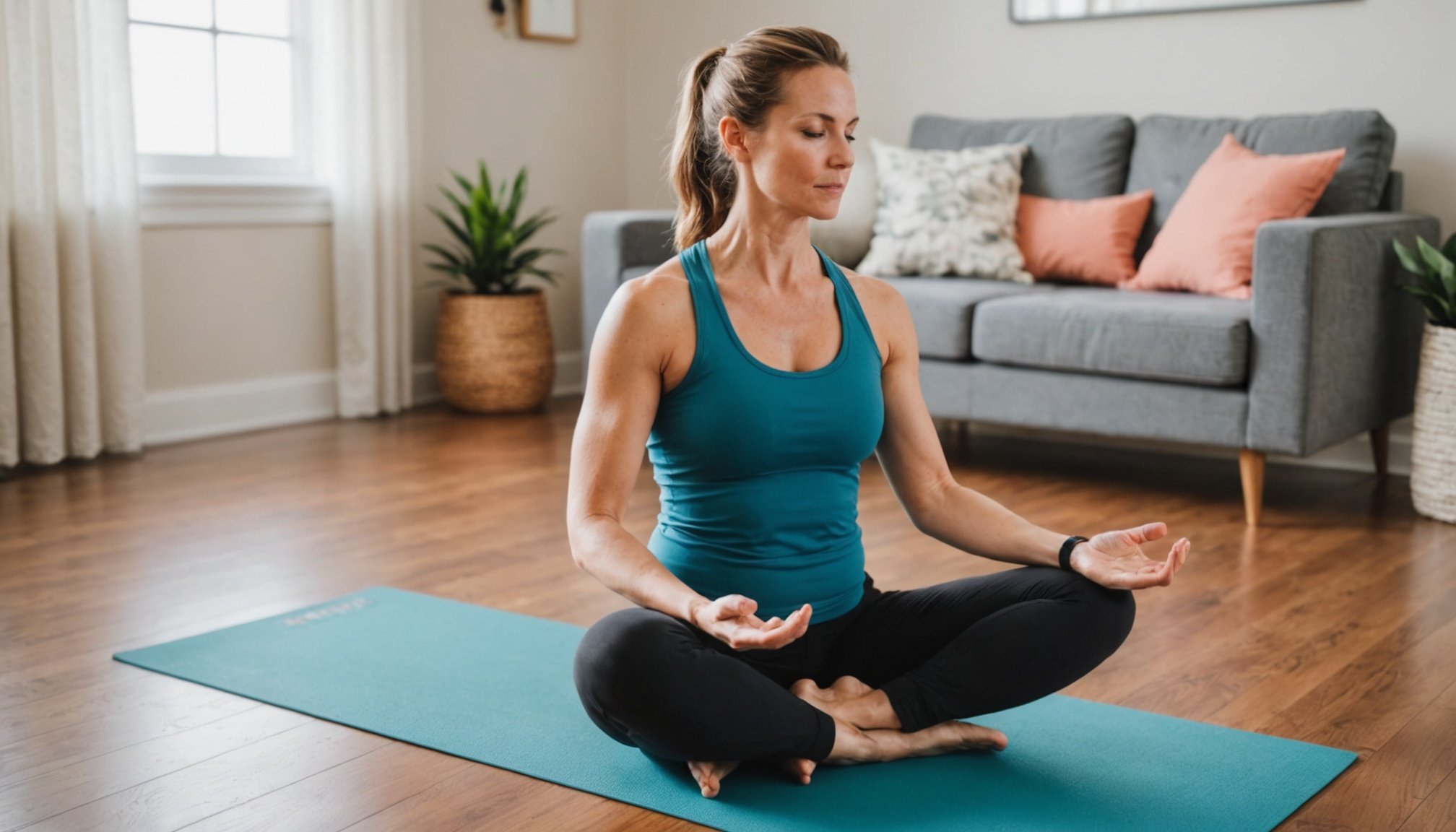Powerful Yoga Poses to Boost Core Strength for Postpartum Healing
Understanding the Importance of Core Strength Post-Pregnancy
After giving birth, many new moms face a myriad of physical and emotional challenges. One of the critical aspects of postpartum recovery is rebuilding core strength, which can be significantly impacted during pregnancy and childbirth. The core muscles, including the abdominal muscles and the pelvic floor, play a vital role in supporting the body’s overall stability, posture, and even mental well-being.
“Core strength is essential for new moms as it helps in improving posture, reducing back pain, and enhancing overall physical stability,” notes Yogacharya Akhil Gore, Founder of RouteIn Yoga.
Also to read : Craft Your Own Herbal Bath Soak: A Relaxing Recipe for Ultimate Skin Nourishment
Benefits of Postpartum Yoga
Yoga is an excellent way to address the physical and emotional needs of new mothers. Here are some key benefits of incorporating yoga into your postpartum routine:
- Improves Flexibility and Strength: Yoga helps in rebuilding the strength and flexibility of the muscles, particularly the core and pelvic floor muscles, which are often weakened during pregnancy and childbirth.
- Reduces Stress and Anxiety: The gentle movements and breathing techniques in yoga can significantly reduce stress and anxiety levels, promoting emotional recovery.
- Enhances Sleep Quality: Certain yoga poses, such as the Corpse Pose and Legs Up the Wall Pose, can help calm the nervous system, leading to better sleep quality.
- Aids in Postpartum Recovery: Yoga poses specifically designed for postpartum recovery can alleviate common discomforts like back pain, leg swelling, and digestive issues.
Essential Yoga Poses for Core Strength
Here are some powerful yoga poses that can help new moms reclaim their core strength and overall physical well-being:
Additional reading : Crafting the Perfect Fitness Regimen: A Guide to Integrating Cardio and Strength Training for Optimal Health
1. Pelvic Tilts
- How to Do It: Lie on your back with your knees bent and feet flat on the floor. Gently tilt your pelvis upward, engaging your core muscles.
- Benefits: Strengthens abdominal muscles, improves posture, and enhances pelvic floor strength.
2. Bridge Pose
- How to Do It: Lie on your back with your knees bent and feet flat on the floor. Lift your hips, engaging your glutes and core muscles.
- Benefits: Strengthens the back and pelvic floor muscles, improves posture, and reduces back pain.
3. Modified Plank
- How to Do It: Start in a push-up position but keep your knees on the floor instead of your toes.
- Benefits: Helps rebuild core strength, improves posture, and strengthens the abdominal muscles.
4. Mountain Pose
- How to Do It: Stand with your feet hip-width apart, arms at your sides. Engage your core and lift your chest, elongating your spine.
- Benefits: Improves posture, engages and strengthens the core muscles, and boosts energy levels.
5. Boat Pose
- How to Do It: Sit on the floor with your legs crossed. Lean back slightly and lift your feet off the ground, balancing on your seat. Engage your core and keep your back straight.
- Benefits: Strengthens the abdominal muscles, improves balance, and enhances core stability.
Detailed Guide to Key Poses
Here is a more detailed look at some of the key poses mentioned above, along with their benefits and how to practice them safely:
Child’s Pose: Relieve Tension
- How to Do It:
- Start on your knees and sit back onto your heels.
- Fold forward, resting your forehead on the mat.
- Extend your arms forward or let them rest by your sides.
- Breathe deeply and relax into the stretch.
- Benefits:
- Calms the mind and reduces stress.
- Increases flexibility by gently opening the hips.
- Promotes relaxation for the body and mind.
Legs Up the Wall Pose: Enhance Circulation
- How to Do It:
- Lie on your back with your legs extended up against a wall.
- Relax your arms at your sides.
- Hold the position for several minutes, focusing on your breath.
- Benefits:
- Encourages circulation and reduces leg fatigue.
- Helps alleviate postpartum swelling.
- Soothes the nervous system and reduces stress.
Seated Forward Bend: Stretch and Calm
- How to Do It:
- Sit on the floor with your legs extended in front of you.
- Inhale and raise your arms overhead.
- Exhale and fold forward, reaching toward your feet.
- Hold for several breaths, focusing on releasing tension.
- Benefits:
- Eases back tension and promotes flexibility.
- Calms the mind and reduces stress.
- Stimulates digestion, aiding postnatal recovery.
Safety Considerations for Postpartum Yoga
Before starting any yoga routine, especially after giving birth, it is crucial to consider several safety guidelines:
- Consult Your Healthcare Provider: Always get approval from your doctor before resuming yoga after childbirth.
- Modify Poses: Adjust poses to accommodate your changing body and avoid overexertion.
- Avoid Hot Yoga: Refrain from hot yoga during pregnancy and the early postpartum period.
- Stay Hydrated: Practice in a cool, well-ventilated space and stay hydrated throughout your practice.
- Listen to Your Body: If you experience any discomfort or pain, stop the pose immediately and rest.
Table: Comparing Key Yoga Poses for Postpartum Recovery
| Pose | How to Do It | Benefits |
|---|---|---|
| Pelvic Tilts | Lie on your back, knees bent, tilt pelvis upward | Strengthens abdominal muscles, improves posture |
| Bridge Pose | Lie on your back, knees bent, lift hips | Strengthens back and pelvic floor muscles |
| Modified Plank | Start in push-up position, knees on floor | Rebuilds core strength, improves posture |
| Mountain Pose | Stand with feet hip-width apart, engage core | Improves posture, engages core muscles |
| Child’s Pose | Kneel, sit back on heels, fold forward | Relaxes back, hips, and thighs; reduces stress |
| Legs Up the Wall Pose | Lie on back, legs up against wall | Enhances circulation, reduces leg swelling |
| Seated Forward Bend | Sit with legs extended, fold forward | Eases back tension, promotes flexibility |
Practical Insights and Actionable Advice
Starting Your Postpartum Yoga Journey
- Begin Slowly: Start with gentle poses and gradually increase the intensity as your body heals.
- Find a Supportive Community: Joining a postpartum yoga class can connect you with other new mothers, providing a supportive network.
- Practice Mindfulness: Focus on your breath and listen to your body. If you feel any discomfort, stop and rest.
Managing Diastasis Recti
Diastasis recti, a common condition where the abdominal muscles separate during pregnancy, can be challenging to address. Here are some tips:
- Engage Your Core: Poses like Pelvic Tilts and Bridge Pose can help strengthen the abdominal muscles and reduce the gap between them.
- Consult a Physical Therapist: A physical therapist can provide personalized exercises and guidance to help heal diastasis recti.
Incorporating Core Exercises into Daily Routine
In addition to yoga, incorporating simple core exercises into your daily routine can be beneficial:
- Repeat Reps: Start with short sets of repetitions and gradually increase as your strength improves.
- Use Tabletop Position: For exercises like planks, use the tabletop position (on your hands and knees) to reduce strain on your back and pelvic floor.
Quotes from Experts
- “Yoga provides a gentle way to reconnect with the body while promoting relaxation and stress relief. It encourages mindfulness, which can help new mothers manage the emotional ups and downs of motherhood,” says Yogacharya Akhil Gore.
- “Incorporating yoga into your postpartum routine can provide numerous benefits for both mother and baby. It not only supports physical well-being but also offers a valuable tool for managing the emotional challenges of motherhood,” notes Himalayan Siddhaa Akshar, yoga guru and founder of Akshar Yoga Kendraa.
Rebuilding core strength after giving birth is a crucial aspect of postpartum recovery. Yoga offers a holistic approach to healing, combining physical exercises with mental relaxation techniques. By incorporating the right yoga poses into your routine, new moms can strengthen their core muscles, improve their posture, and enhance their overall well-being. Remember to always consult with your healthcare provider, modify poses as needed, and listen to your body to ensure a safe and beneficial practice. With patience, consistency, and the right guidance, yoga can be a powerful tool in your postpartum healing journey.











